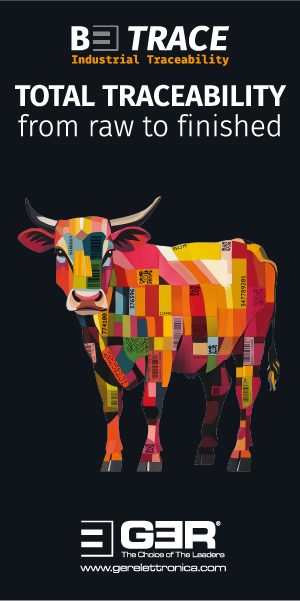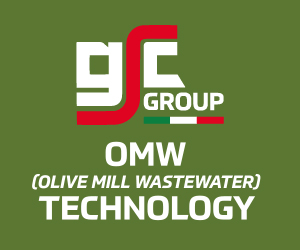Market Intelligence—26.03.24
Macroeconomics
The world is certainly not in order at the moment, but not much new has happened on the political stage in the last two weeks.
Sometimes it all seems a bit surreal on the financial markets. The global economy is stuttering, the geopolitical crises and tensions are considerable and yet share prices are rising, cryptocurrencies are playing yo-yo, but at record levels, and only gold, as a so-called crisis metal, is reflecting the crises through its rising value with new record highs.
Similarly, many stock-listed international companies are reporting record profits and the so-called experts and the media are constantly endeavouring to come up with new explanations as to how this can all be so. There is a feeling that the financial markets are somewhat detached from the realities. It is generally said that the stock market always trades the future and so we hope they are right.
On the positive side, and this is the most common explanation, expectations of falling interest rates are fuelling the financial markets. This has been supported by comments from the Federal Reserve and the European Central Bank, which are preparing the markets for interest rate cuts before the end of the year. In the US, this may seem rather surprising due to the still extremely robust labour market, but it is likely that the massive risks on the property and credit markets are being recognised there in an attempt to prevent major distortions.
In China, the national mood remains rather depressed, but at least exports increased significantly in the first two months and the summary of the figures for the first two months left a moderately positive impression. However, there is always a certain residual doubt as to what extent the government-managed statistics can actually be believed.
Oil prices rose slowly and reached levels well above $80 per barrel again. We are essentially playing the supply side as the decisive factor in the price trend.
The price of gold rose to almost $2,200 per troy ounce. The dollar fluctuated somewhat and oscillated around the $1.09 mark in trading with the euro amid the prospect of falling interest rates.
Leather Pipeline
Even if a trade fair cannot really change the parameters in the leather pipeline, the three days at APLF in Hong Kong last week were of significance.
Just like the Semaine du Cuir exhibition in Paris in the past, there are certain anchor events that have a high psychological significance. APLF has always been a centre of attraction for the industry and Hong Kong as the location encouraged a large number of players to meet there and discuss the situation along the leather pipeline. The main problem was, and is more than ever, finding a sufficient number of exhibitors to make it profitable and attractive for the organisers to host such a trade fair at all.
Readers who did not have the opportunity to come to Hong Kong will, of course, want to know what impressions of the leather business visitors have returned home with.
There is no doubt that for many visitors in the past, Hong Kong was not only an attractive destination for a trade fair, but for many it was also a shopping paradise and a welcome change from their lives at home. Hong Kong was special. It was full of dynamism and vibrancy, it was incredibly efficient and its inhabitants used all the freedoms they had to make it a little better and more special every time. It is still the same Hong Kong; the Star Ferry still travels between Hong Kong and Kowloon and, visually, not much has changed. There is little space, but somehow there was always something new to be built or changed somewhere. Even now, if the business concept for a building no longer works, then you just rebuild and put up something new.
However, this is only part of the story. The changed political situation and the extremely strong influence from Beijing are undoubtedly making themselves noticeable. Somehow you get the feeling that people and business life have shifted down two or three gears. Everything seems a little slower. People no longer seem so full of drive and energy and the shopping streets and shopping centres are much quieter. For visitors from mainland China in particular, Hong Kong no longer seems to be such a special destination with special characteristics. However, it is also particularly noticeable that the prices for consumer goods in Hong Kong are in many cases no more attractive today than in other international cities. Ultimately, shopping has always been a major attraction for visitors.
Whether this is just a reflection of the general reluctance to spend, but a problem specific to Hong Kong will certainly have to be looked at very closely. In any case, conversations with local residents also show that Hong Kong is looking for a new position. If the creativity is recognised and is not suppressed, you can be sure that Hong Kong will become an attraction again.
At the APLF exhibition itself, there was a visually appealing number of visitors. You always have to be a bit careful, because a smaller area provides better impressions in this respect. However, it is not of central importance whether 300 more or fewer people come, but as usual it is much more important who is there, what results and impressions they take away with them and whether the people on spot, exhibitors or visitors, go home with a positive feeling.
The majority of the exhibitors we spoke to were not particularly satisfied with the levels of interest. Those who had expected orders and business from the exhibition were disappointed. Unfortunately, this is also due to the fact that the fair is not a buyer’s fair for leather.
Those who see Hong Kong as a focal point for their business contacts in Asia and have a stand at the fair to host these meetings were for the most part very satisfied; their expectations are simply different. If they manage to get their business contacts and customers to come to the stand, even if it is just to exchange ideas and discuss the business relationship, then the goal has been achieved.
The last and possibly the most important group are visitors who did not necessarily come for the products on display or to develop new business contacts. These are all those who go because of the gathering of representatives of the entire supply chain, from raw materials to finished products, materials, chemicals and machinery, and whose visit is almost exclusively for social reasons and exchanging information. After-work parties were also well attended this time and can probably be described as very successful. This is important and significant, but one could do the same without a trade fair.
Despite all the restrictions, we would still say that the first edition of the APLF after the covid interruption was a success. Whether this will be enough to attract more exhibitors again will probably depend not only on APLF 2024, but probably also on further global developments over the course of the next year. In any case, it can be summarised that there is no really convincing reason to say goodbye to the venue or the event format. Nevertheless, we need to think very carefully about how and in what form it might be possible to attract more exhibitors to this fair again. From our point of view, further incentives and, above all, other sectors in and around leather need to be attracted to become part of this event.
What can we say about the leather business and the situation along the leather pipeline? If it needed any confirmation, it is definitely true that the situation in Asia is significantly better than in Europe. Of course, this also has to do with what and who produces in Asia and which markets are available there. The mass producers have their factories in Asia and the number of potential consumers is also much greater in Asia than in other regions. The many burdens that we are familiar with in Europe in particular do not play a decisive role in Asia, especially in China. The mood is simply better. Wars are far away, the cost situation is much more favourable and people are not only in a better mood, but also accept problems and try to solve them, as they have always done.
This meant that there were a wide range of opportunities in the raw materials market, but the suppliers had and still have to come to terms with the fact that Asia is a price-sensitive market for a variety of well-known reasons. This is why clearly defined price limits apply to many raw materials. Without significantly higher leather prices, which can actually only be realised for quality products in the western markets, no significant price increases can be expected or implemented. Here and there, one or two raw material suppliers do not seem to realise this and some fall back into the same routine of thinking that a few sales are synonymous with higher prices being achievable. On the other hand, we have also heard from major producers, particularly in China, that significant quantities have been offered and sold from Europe at prices that may be in line with the market, but are also far below what is generally expected for European product.
In a nutshell, it can be said that the demand and also the willingness and ability to produce leather and leather products in Asia at certain prices is satisfactory. At least for the next season, this applies to all three major sectors. Shoes, because of the retro wave, furniture, because of the price and, finally, cars because of the still great willingness in the Chinese market to equip vehicles with leather.
Now we have to see how production develops over the summer, as we really cannot imagine any serious increase in support for demand and the general leather business from Europe. For all those involved in leather in the broadest sense, the extent to which demand for leather will develop from Q3 onwards will of course be particularly important, and especially whether it will be possible to sell the material again at a certain price premium. We doubt this, as the consumer goods markets have not yet been retrained to combine the superior properties of leather, its durability and sustainability, with a premium on the price. At the moment, people are more inclined to buy leather at the same price because of its image and, in case of doubt, to leave plastic behind. However, we do not see any willingness to do this at a higher price.
Apart from the trade fair in Hong Kong, Gucci’s profit warnings naturally made the rounds last week. Significant declines in turnover and sales, merely decorated with the hope of an improvement through the new collections, were quite a shock for many who saw a never-ending success story in the luxury segment. However, anyone who has studied the sector a little more closely already knew that things were not going particularly well at Gucci and this also applies to a number of other brands. The reports and rumours about not inconsiderable quantities of unsold products are apparently a reality and now the only question is what to do. In principle, the only alternative is destruction. Discounts are not provided in the luxury segment and how else to sell large quantities of older products is certainly not easy to answer. In the case of destruction, however, it is difficult to satisfy the high demands on sustainability. It is simply the case that sometimes reality overtakes desire.
The market for splits has developed very positively and this will certainly help tanners with splits to sell. The demand for wet blue splits and lime splits has increased significantly. Price increases for wet blue split have already been implemented in recent weeks and especially in the last week, if some large producers have not yet fully covered their contracts, the trend could continue. However, everyone must realise that there are still a lot of very cheap stocks of bovine hides that can be used quickly as splits or as a substitute for splits.
In the case of lime splits, a great deal will depend on how the producers of collagen and gelatine behave in terms of procurement in Q2 and Q3. The supply will certainly not quite meet expectations in Europe.
The small skins sector is also offering more positive news. The demand for goats, lambs and sheep is slowly but steadily increasing. Prices are still far from adequate for producers and suppliers in most cases, but at least the complete paralysis we have seen for most of the sector for almost two years is slowly but surely a thing of the past. Major brands have decided to launch leather collections again, specialities are continuing to perform very satisfactorily and the limited supply is doing the rest. However, it remains to be seen whether demand will ultimately be sufficient to raise prices to a level that justifies the collection, preservation and sorting of these goods in larger quantities again.
For the next few weeks, we assume that developments will first be analysed and observed. Easter is approaching and market activity usually tends to decline in Q2 and Q3. New orders and stimulus are rare at this time of year.
Particular attention will now be focused on the automotive leather market in Europe, and possibly even on the entire leather industry in this region. This is where the main problems lie and therefore where the greatest attention will be focused. Beyond this, we do not expect any special events to affect the market along the leather pipeline in the coming weeks for the reasons described above.
















